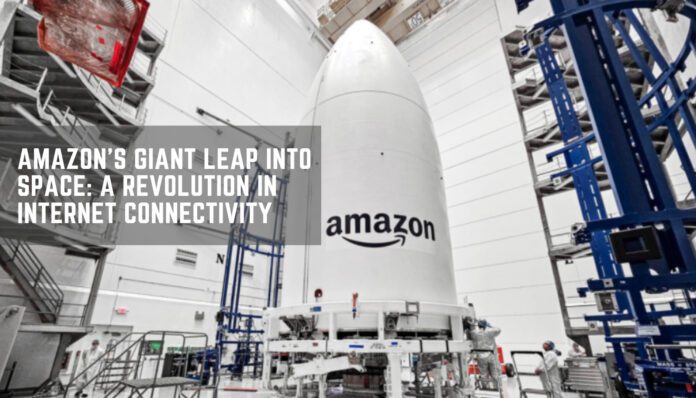In a groundbreaking development, Amazon has ventured into the space technology arena with the triumphant launch of its inaugural pair of prototype internet satellites. This audacious leap signifies Amazon’s entry into an ambitious endeavor: the deployment of over 3,000 satellites in low Earth orbit. The implications of this venture are far-reaching, promising to transform internet connectivity, particularly in remote and underserved regions. Amazon’s bold step sets the stage for a remarkable showdown with SpaceX’s Starlink network, heralding a new era in the satellite-based internet market.
The two experimental satellites embarked on their celestial journey from a launch facility in Florida. Their primary mission is to amass invaluable real-world data for Amazon’s expansive Kuiper satellite project. This grand plan involves launching operational satellites in the near future, with customer testing slated to commence by the conclusion of 2024. In adherence to the Federal Communications Commission’s (FCC) stipulations, Amazon faces a stringent timeline, mandating that half of their envisioned constellation—comprising an impressive 3,236 satellites—must be in orbit by July 2026.
Amazon’s visionary Kuiper network is poised to bridge the digital chasm by delivering high-speed internet access to remote and underserved areas through the use of satellite signals. Positioned as a direct competitor to SpaceX’s Starlink, Kuiper faces the formidable challenge of catching up with Starlink’s substantial head start in the satellite internet domain. SpaceX has already made considerable strides in deploying its extensive constellation of internet-providing satellites, intensifying the race for supremacy in space-based internet services—a captivating saga awaiting its unfolding.
As Amazon enters this new frontier, its ambition to revolutionize internet accessibility resonates with the company’s track record of innovation and disruption. The deployment of thousands of satellites in orbit promises to address one of the most pressing global issues: the digital divide. With a commitment to providing connectivity to even the most remote corners of the Earth, Amazon’s initiative holds the potential to transform the lives of billions.
The successful launch of the initial prototype satellites from Florida showcases Amazon’s dedication to its Kuiper satellite project. These satellites, while in their testing phase, have already marked a significant milestone. They represent the future of internet connectivity, a future where geographic remoteness is no longer a barrier to access.
Amazon’s timeline for the Kuiper project is ambitious but in line with the company’s reputation for setting high standards. By 2024, customers can expect to participate in testing, opening the door to a world where high-speed internet is truly global. The FCC’s regulations provide an additional layer of accountability, ensuring that Amazon remains committed to its mission.
However, it’s crucial to acknowledge the formidable competition Amazon faces. SpaceX’s Starlink network has a head start, with a substantial number of operational satellites already in orbit. The battle for dominance in the satellite-based internet market promises to be an epic showdown, akin to a modern space race.
Amazon’s foray into space technology marks a significant step towards democratizing internet access. With innovation and ambition as their guiding stars, Amazon is poised to take on the challenges of this new frontier. As the race unfolds, the world watches with bated breath, anticipating the transformation of internet connectivity as we know it.


Amazon’s Satellite Venture: Internet Revolution Beginsa>